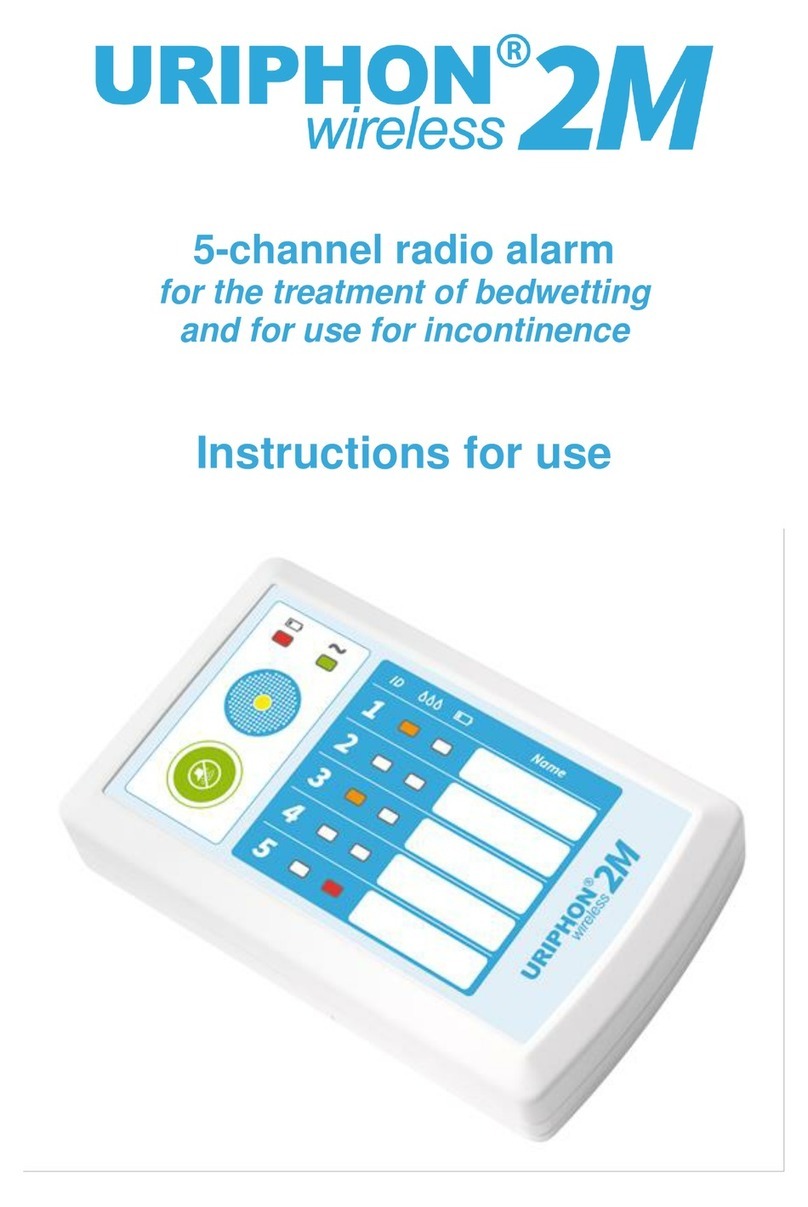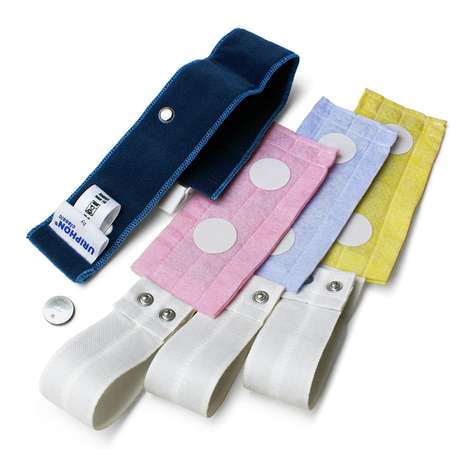3
E
Alarm device for the treatment of bedwetting
Description:
The new device is the successor model to the Uriphon® wireless,
which was produced as a ‘paired’ (transmitter and receiver). This meant that in
the past transmitter and receiver could only communicate if both components
were manufactured and delivered with the same radio channel. With the
this has now completely changed. The transmitter and receiver’s
factory settings now allow them to work independently. Each transmitter has a
unique identification code and is paired, during its initial start-up, with the
receiving unit.
The main advantage to this lies in the fact that in the event of a potential
malfunction of one of the two components, these can be replaced individually
now rather than a complete pair being required. In addition, any
transmitter can be paired with any receiver.
Absorbent pads which are fastened to underwear in use are available for the new
version too. They can be used freely in any underwear and also offer continuous use
without a drying phase. They can be re-inserted immediately after an alarm. It is not
necessary to use special underpants.
Thanks to the new mobile, even smaller and more convenient transmitter, the
product is now significantly more flexible, offering increased sleeping comfort
and freedom of movement. Additionally the transmitter is equipped with a
switchable vibration alarm.
Note: can also be used with a bed liner. (see section "Additional Options")
The unique identification code of the transmitter allows the use of multiple devices
within a common environment without interference. The radio range within buildings is
between 15 and 30 metres. This makes ideal for hospital use too.





























